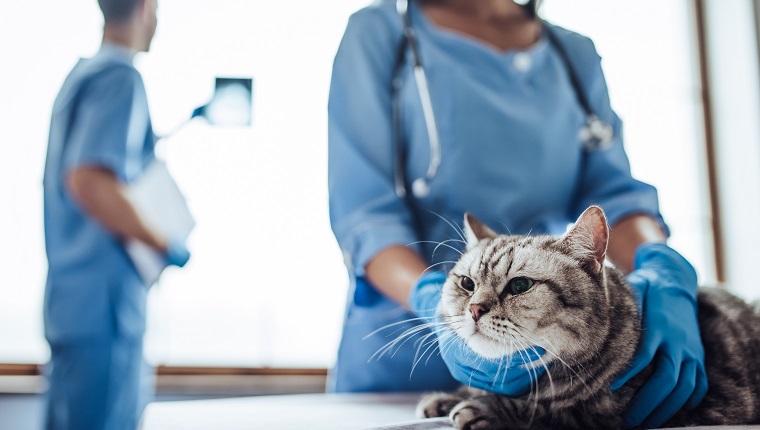Osteomyelitis in cats is a medical condition that involves bacterial infection or a fungal infection in a cat’s bones or bone marrow. It can also result from an infection from another area of the cat’s body that subsequently moves through the bloodstream and makes its way into the bone and bone marrow.
The condition can be classified as either acute or chronic depending on the severity of the infection.
If you see signs that your feline might be suffering from an infection, then you must consult your veterinarian for a proper diagnosis and course of treatment. Here’s what you should know about the symptoms, causes, and treatments of osteomyelitis in cats.
Symptoms Of Osteomyelitis In Cats
Osteomyelitis in cats can present a range of symptoms. Some of the most common symptoms include:
- Acting in a weak and lethargic fashion
- Fever
- Pain of the limbs
- Swollen joints and limbs
- Loss of appetite
Causes Of Osteomyelitis In Cats

There are a number of causes of osteomyelitis in cats. Some of the most common causes include:
- Bacterial infection
- Fungal infection
- Injury from a trauma or fracture
- Infection during a dental procedure
- Wounds from being bitten or clawed
Veterinary Treatments
If you suspect that your cat is suffering from osteomyelitis, your veterinarian will want to ask a series of questions about their medical history. This will include asking about any recent circumstances and situations that might have given the opportunity for an infection to develop.
The vet will order blood and urine tests when forming a diagnosis. Additionally, they may use X-rays and ultrasounds to help confirm a case. Cats may need bone biopsies in some instances, and the vet may send samples of fluid around any wounds to a lab for analysis.
When it comes to treatment, the first step is to clean any affected areas and irrigate any wounds. The vet will also likely prescribe antibiotics to target any infection. As ever, if your vet prescribes your cat a course of antibiotics, it is vital that you stick to the precise dosage and frequency instructions, along with completing the full course of medication.
Along with antibiotics, vets may need to stabilize any fractured bones when providing treatment. In some cases, vets might even suggest amputation.
When your cat recovers at home, vets will usually advise you to limit the amount of exercise and activity that your kitty undertakes. This is so that your cat’s bones can heal properly. Additionally, you’ll need to schedule regular visits to your vet to properly monitor your feline’s recovery.
Has your cat ever developed osteomyelitis? What kinds of symptoms did you see? Tell us all about it in the comments below.









